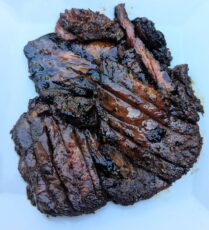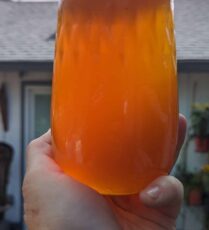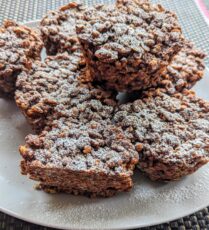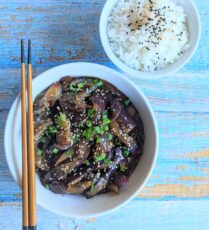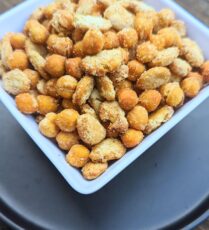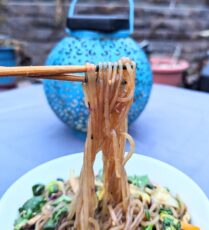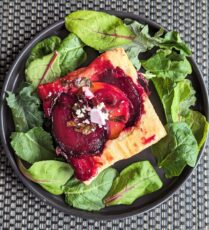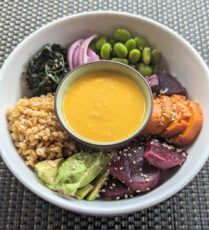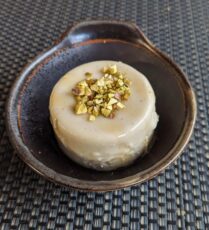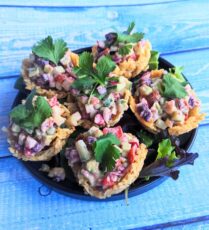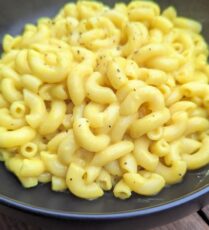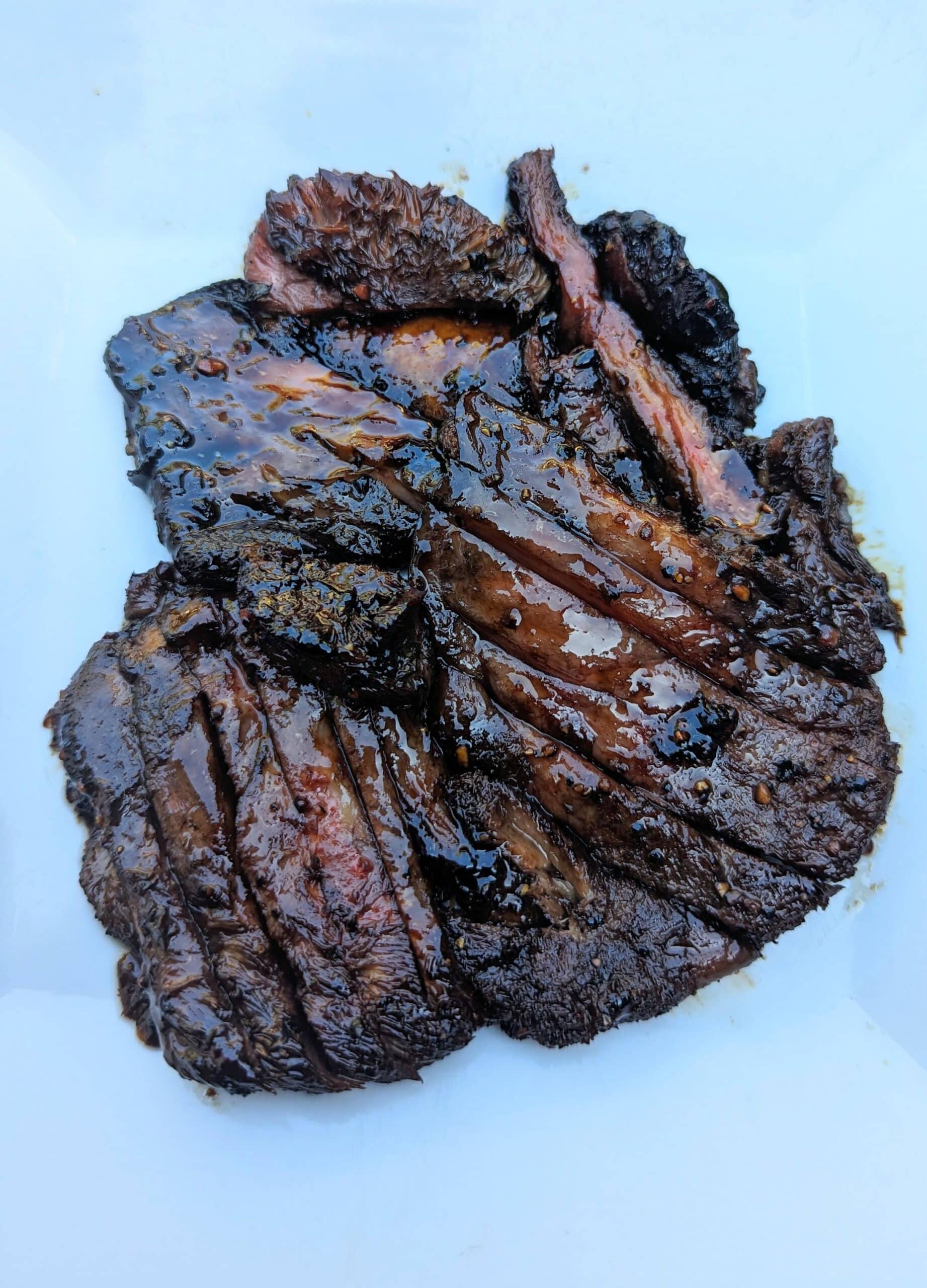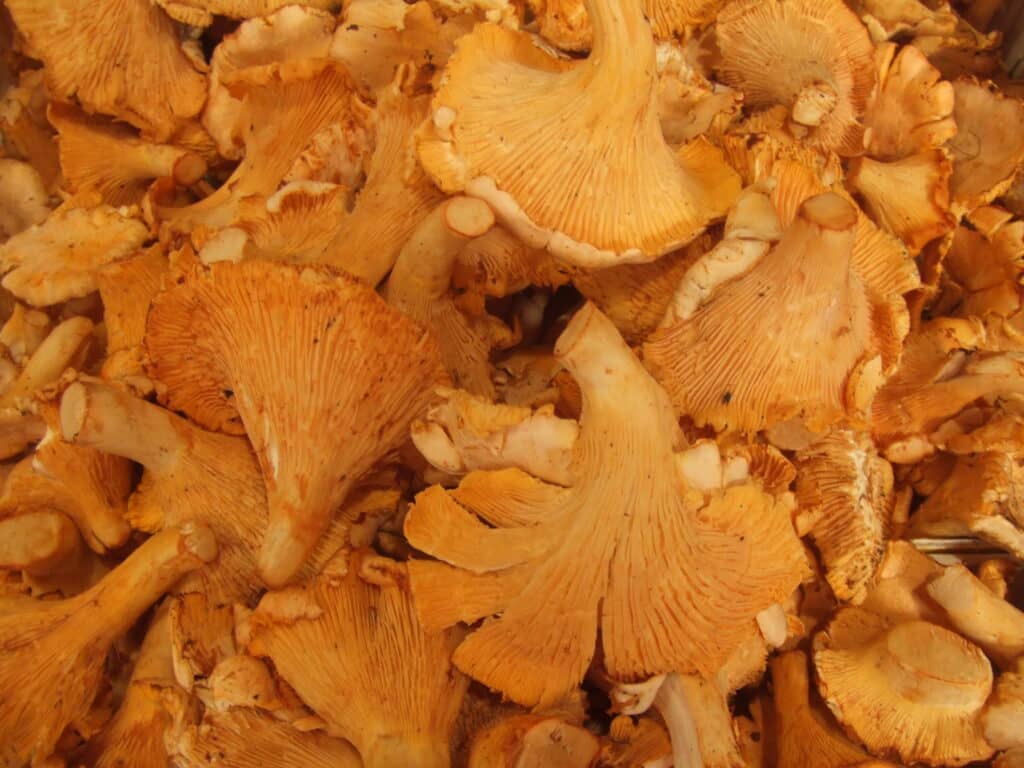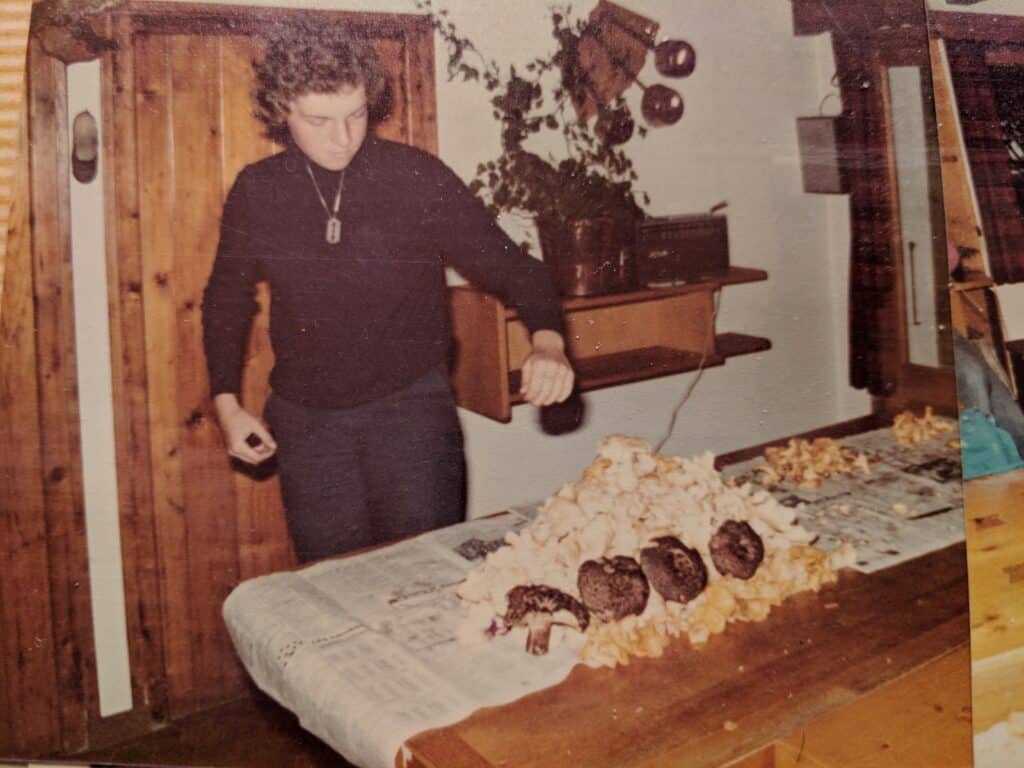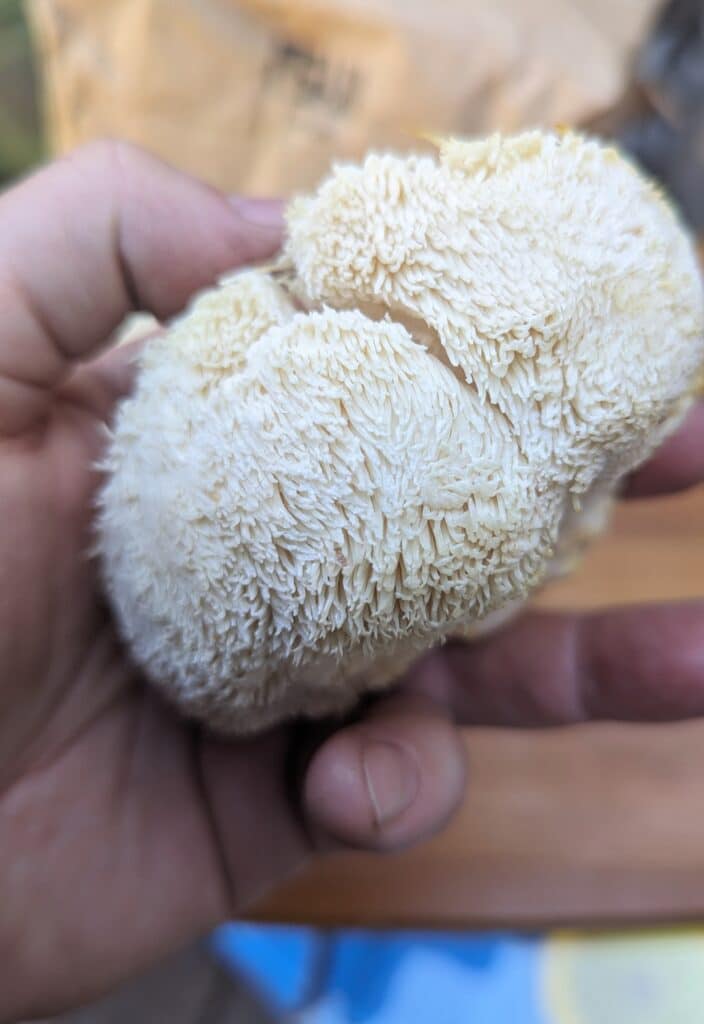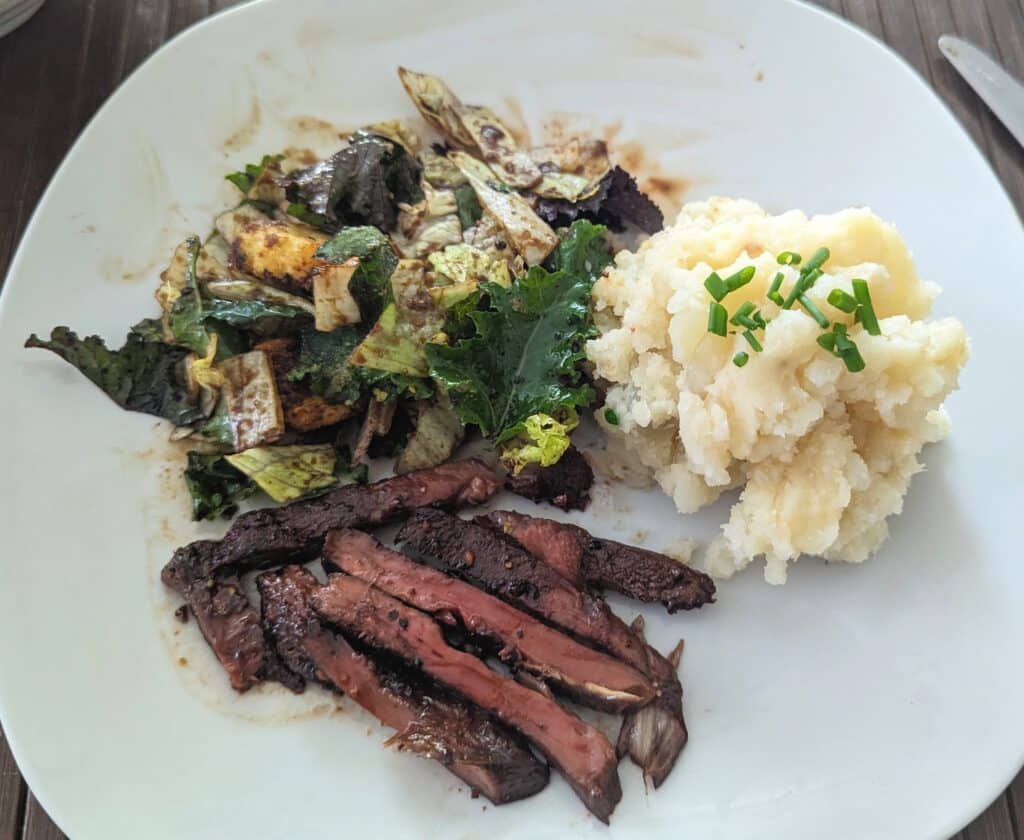The world of mushrooms will not cease to amaze me! I grew up only knowing a few types: baby bella, the most commonly found in grocery stores, but kind of on the bland side. At the farmer’s market, I discovered many more like bolete, chanterelle, porcini, morels, truffles. But they were more like expensive delicacies served in fancy restaurants!
It was only after my parents took me to a beautiful youth camp in the French Alps, that I really experienced the world of mushrooms! For a little girl who grew up in a 3rd floor apartment, I have the happiest memories of being fully immersed in nature, picking fruit and vegetables, watching bees make honey, harvesting wild berries and foraging wild mushrooms. The owner knew the forest like his own backyard and would take us to the best spots to find chanterelles, bolete, and other gifts Mother Nature left for us to find.
This is what we brought back from one of our outings! Mostly chanterelle and some bolete! We made mushroom omelets, grilled mushrooms… it was amazing! He taught us to only harvest a few in each spots, to cut the stem with a knife and never pull the stem from the ground so that it could regrow the following year. This simple and joyful adventure instilled in me a love and reverence for Nature that is still burning inside of me, decades later. I am so grateful for that!
As more and more research is being done into the healing power of certain mushrooms, it is easier to find them and more products are being made with their extracts. Relatively new to the pack, is Lion’s Mane. In nature, it grows on trees and looks like delicate, fluffy white little balls. With the growing demand, they are now grown in bags in tents and controlled environment. You can even grow some at home with the proper kit and care. It is affordable and a fun project to do for the whole family. It takes from 14-21 days (depending on the temperature) to harvest these beautiful white clumps!
Health benefits of Lion’s Mane
Research shows that Lion’s Mane is a nootropic. It not only supports brain’s health and function (no more brain fog), but more importantly it can regrow brain neurons (nerve growth’s factor). That’s just extraordinary! It could protect the cognitive functions crippled by Alzheimer disease.
It also helps regulating the gut microbiome by fighting bacteria and pathogens.
Lion’s Mane is known to calm the nervous system, ease anxiety and help fall asleep.
Any counter indications? It has a mild blood thinning effect, so if you are on anti blood clotting medicine, you may want to consume it in moderation.
How to handle Lion’s Mane
As with all mushrooms, they must be stored in a paper bag. No plastic unless you poke holes in it.
Handle delicately as they are quite fragile. Leave on the counter and cook within 1-2 days of buying them.
To clean, use a toothpick or a tooth brush to lightly remove any dirt. Never dip in water because they are mostly made of water and would get all soggy as a result.
If you buy a small crate at the farmer’s market, you don’t have to eat them all at once. You can quickly pan fry them in a little oil and seasonings and freeze for later.
What can you do with Lion’s Mane
You can tear off little pieces, dip them in batter and fry them like fried chicken. You can also make the most amazing steak-like dish! These slices melt in your mouth and make the best steak sandwich, or taco filling. You need the right marinade, time to sear each ball, and press it down until the marinade is fully absorbed. I have never like steaks even when I was eating meat, but for my meat eater friends (mostly their husbands!), I wanted to see if I could make something that looks like it and maybe have a similar texture. Turns out, it is pretty right on!
Lion’s Mane steaks go great with French fries, garlic mashed potatoes and a green salad. It is so good and makes a pretty fancy meal! And if you make extra, you can make a steak sandwich, use it for taco filling, you get the idea!
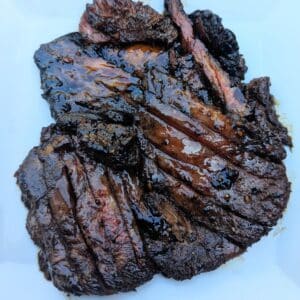
Lion's Mane Pepper Steaks
Equipment
- Heavy skillet
Ingredients
- 4-5 Lion's Mane mushroom "balls"
- 2 Tbsp neutral vegetable oil
Steak Marinade
- 1 Tsp garlic powder
- 1 tsp onion powder
- 1 tsp sweet paprika
- 1-2 Tbsp soy sauce
- 2 Tbsp mushroom oyster sauce (optional)
- 1-2 Tbsp rice vinegar
- 1 Tbsp beet powder or 2 drops of red dye (optional)
- 2 Tbsp crushed peppercorns
- 1 tsp sea salt
Instructions
Make marinade
- Combine soy sauce, rice vinegar, garlic, onion powder, paprika, beet powder or red dye. Set aside.
Sear the steaks
- Carefully remove any dirt from the mushrooms with a toothpick or a tooth brush. If you have large clumps, separate into equal sections.
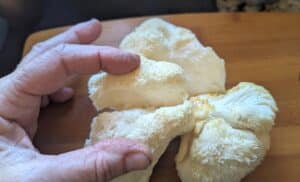
- Heat up a cast iron pan or a heavy skillet. Add a few tablespoons of oil and some salt. Place each mushroom ball stem down.
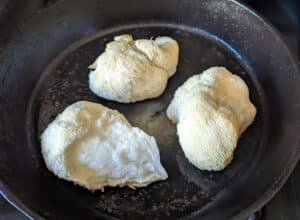
- Cook on high heat for a few minutes, moving the mushrooms around. Use another pan to press down on them.

- When the bottom starts to sear, flip them and add a little more oil if needed. Press again for 2-3 minutes until they shrink down in height.
- Using a sharp or serrated knife, score shallow slices in each steak. This will help to absorb the marinade. Pour the marinade into the hot pan and flip the steak.
- Cook covered for another minute. Scoop some of the marinade with a spoon and drizzle over the steaks before it is completely absorbed. Scrape any little bit stuck to the bottom of the pan, that's the best stuff.
- Serve with French fries, or mashed potatoes and a green salad.


